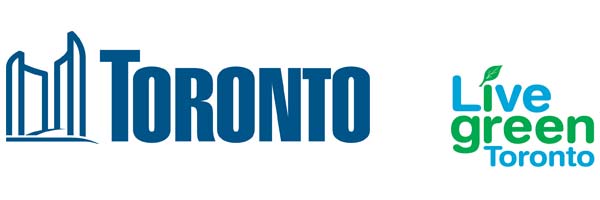Torontonians pay a lot for energy. A study conducted by the Fraser Institute found that the hydro bill for a typical Toronto household increased by 62 per cent from 2010 to 2016.

Stewart Dutfield, program manager of the City of Toronto’s Home Energy Loan Program (HELP), says it makes sense to invest in energy-saving improvements at home to help mitigate these costs.
Replacing windows and investing in new heating and hot water systems can save you money in the long run, research shows.
To that end, houses and buildings generate more than half of the emissions that contribute to climate change, so retrofitting your home is a good way to reduce your carbon footprint, Dutfield adds. Reducing energy use in buildings is key to meeting the goals of the City’s TransformTO Climate Action Strategy.
“Sometimes, the high upfront cost of home energy improvements is a barrier for homeowners, but that’s where the City of Toronto can help.”
Through its Home Energy Loan Program, the City offers low-interest loans of up to $75,000 to homeowners who want to make their spaces more energy efficient.
“Homeowners who improve their homes with the help of a low-interest loan from the City of Toronto could save on average $560 per year on their energy bills,” he says.
For homeowners who don’t know where to begin, Dutfield suggests hiring a registered energy advisor. They’ll assess your home and provide a personalized and detailed report of the types of improvements that will have the greatest impact.
Homeowners who get an energy audit can also qualify for incentives and rebates offered by utility companies. The cost of the audit may be covered if you undertake some of the improvements.
There are a number of ways to improve the energy efficiency of a home and make hydro bills more manageable. Here are five, presented in partnership with Live Green Toronto.
1. Windows and doors

Get breaking National news
According to Natural Resources Canada, up to 25 per cent of your home’s heat loss can occur through windows, doors and skylights.
And if you’re using a space heater to make up for the escaping heat, think again. Natural Resources Canada notes that space heating accounts for 63 per cent of the energy used in the average Canadian home.
Instead, add weather stripping, upgrade to double or triple-glazed windows or install storm windows and doors to keep existing heat in.
2. Heating
“Upgrading to a high-efficiency furnace or boiler is something a lot of homeowners do,” says Dutfield.
More simple changes are also available. Buy a programmable thermostat and program it to lower the temperature when you’re not at home and at night. Also, be sure to change filters regularly, because dirty ones reduce air flow and make your furnace work harder, Dutfield says.
3. Insulation
Consider upgrading the insulation of your home, especially if you’re already going through a major renovation.
Good insulation retains warm or air-conditioned temperatures and prevents outside air from seeping in. Insulation can be effective in a variety of areas of your home including exterior walls, attics and basements.
4. Lights
Lighting accounts for four per cent of the energy used in the average Canadian home. It’s also possibly one of the easiest swaps you can make for a more energy efficient household.
“Switch out your incandescent or compact fluorescent light bulbs for light emitting diode (LED) ones,” Dutfield says.
LED bulbs work about 90 per cent more efficiently than their incandescent counterparts and last approximately 25 per cent longer.
5. Roofs
The City of Toronto also offers incentives to support the installation of green roofs on residential homes.
Green roofs absorb heat and in turn reduce energy costs. They provide natural insulation for buildings and can also retain 60 to 100 per cent of rainfall, Canadian Geographic notes.
“Few people know this because so many of them are not visible, but Toronto is a leader in green roofs.”
In 2016, Toronto was recognized for having the most green roof area of any city in North America.
To reach our emissions reduction target (80 per cent by 2050 as identified in the City’s TransformTO Climate Action Strategy), all existing homes in Toronto need to be 40 per cent more efficient, on average, by 2050 than they are today. Retrofitting your home is just one way to reach this milestone. To learn more about the City’s Home Energy Loan Program and Eco Roof Incentive Program, visit www.livegreentoronto.ca

_848x480_1347505731814.jpg?w=1040&quality=70&strip=all)


